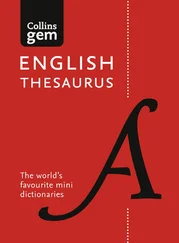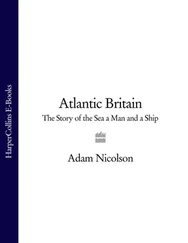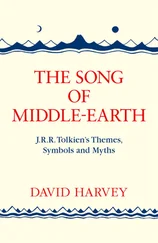While Jenkins’ pedagogical approach may be tempting, it may, however, not be a sagacious approach to promoting the LFC as a model. To date, there has been paucity of comprehensive and reliable descriptions of the ways in which EFL learners are making use of English (Gnutzmann & Intemann, 2008, p. 17). Therefore, thirdly, explicit mention should be made here with respect to Jenkins’ proposal of excluding the dental fricatives /θ/ and /ð/. The question arises of what should replace them. Should /f/ and /v/ become elements of the LFC, which are variants of Cockney English (Wells, 1982b, p. 328)?
Another option would be that they are superseded by /t/ and /d/, similar to speech patterns of many people in Ireland and some speakers of New Englishes. If such substitution is encouraged when speakers with a /t/ and /d/ pronunciation travel through Europe, where /s/ and /z/ are commonly found, e. g. in German English, communication problems may end up exacerbating them instead of being avoided. In terms of choosing an accent model, it appears that the RP accent is currently still a bona fide ‘lingua franca’ accent, be it throughout the UK, some other English-speaking countries or within the EFL community across Europe and beyond. RP parlance means that everyone can understand it. Like GA, RP has been extensively described and was solidly and thoroughly codified. Its appropriation is, in my opinion, not an esoteric skill that can be only acquired by language geniuses. It is possible with systematic and ongoing training. Celce-Murcia et al. (as cited in Schmitt, 2016, p. 48) argue in this respect that “adults are capable of rising to the challenge of performing competently−if not exceptionally−in a new sound system”. If EFL teaching places the teaching of pronunciation on an equal footing with the language areas of lexis and lexico-grammar by not treating it as the “Cinderella of language teaching”, teachers will therefore cater for EFL students to be readily intelligible when interacting with both NSs and NNSs (Schmitt, 2016, p. 15).
After having dealt with the ‘Mid-Atlantic’ and Euro-English paradigms, which are closely connected to standard language ideology, the following chapter looks more closely at the notions of Standard British English and Standard American English. Both these varieties represent the cornerstones of my research.
1Also referred to as Global English, Lingua Franca English and World English (cf. Brinton & Arnovick, 2017, p. 485).
2WSSE stands for World Standard Spoken English (cf. Crystal, 2003a, p. 185).
3A typical BrE culture-specific expression is, for example: “it was like Clapham Junction here.” International speakers are well advised to say “it was very busy or crowded here.”
4In a personal email communication, Modiano specified that the studies in his anthology Studies in Mid-Atlantic English, to which two of my reviews refer (cf. Axelsson-Westergren and Söderlund & Modiano), were all more or less from 2002 (Modiano, personal communication, August 15, 2018).
5An MTV video-jockey is a person who introduces music videos on TV, such as MTV.
6ENL stands for English as a Native Language (inner circle variety), ESL for English as a Second Language (outer circle variety) and EFL for English as a Foreign Language (expanding circle variety).
7Extramural English may serve as an umbrella term for other similar ones: unintentional learning, incidental learning, out-of-class learning or even colloquially spare time English (cf. Sundqvist, 2009, pp. 25–26).
8Jenkins and Modiano use the labels English as an International Language (EIL) and English as a Lingua Franca (ELF) indiscriminately (Jenkins, 2007, p. xi; Modiano, 2009, p. 86). Seidlhofer stresses that most ELF interactions are among NNSs of English. ELF is therefore a contact language, whose users do not share a common native tongue and “for whom English is the chosen foreign language of communication” (Seidlhofer, 2005, p. 339). Based on this definition, Seidlhofer explicates that “ELF is part of the more general phenomenon of ‘English as an international language’ (EIL)” (2005, p. 339).
9The following scholars delved deeper into the issue of Euro-English/International English/English as a Lingua Franca, all of them on the basis of empirical studies: Erling 2004; Jenkins, 2000, 2002, 2005, 2007; Kirkpatrick, 2007; McKay 2002, 2018; Modiano, 1999a/b, 2009; Mollin 2006; Seidlhofer, 1999, 2004, 2013.
10ELF is described as “an additionally acquired language system which serves as a common means of communication for speakers of different first languages” (Seidlhofer, 2013).
11Crystal gives numerous examples where invariant tags are in use in other varieties of English: in Welsh and South Asian English, for example. ‘Innit?’ is used in Cockney English (Crystal, 2003b, p. 299).
12Cf. Mercedes Durham’s doctoral thesis English in Switzerland: Inherent Variation in a Non-native Speech Community (2007).
13Given the ambiguity of the term ‘International English’, she states that “we cannot assume that the figures for this international variety signal support for the empowerment of non-native speakers” (Mollin, 2006, p. 174).
14It is worth pointing out that this phenomenon of lingua franca usage also occurs in non-EU countries such as Switzerland (cf. Durham, 2006; Murray, 2003).
15In response to Modiano’s recent article English in a post-Brexit European Union, it becomes clear that Jenkins has shifted her initial ELF conceptualisation towards a vision of “English within multilinguism”, which she labels as “English as a multilingual franca (EMF)” (Jenkins, 2017, p. 345). Within the European context of applying translanguaging, Jenkins defines the functionality of English as “multilingual communication in which English is available as a contact language of choice, but is not necessarily chosen” (2017, p. 345). Mauranen, in a similar vein, views ELF interactions as a dynamic process, whereby the notion of “languaging” with language is being perceived as a system “continually created in social interaction” (2018, p. 15).
16The idealised status of native-speakerism resulting in a stigmatising dichotomy of native and non-native speakers has been thoroughly discussed by Bouchard and Lowe (2017, pp. 55–59; 2020, pp. 26–31).
Конец ознакомительного фрагмента.
Текст предоставлен ООО «ЛитРес».
Прочитайте эту книгу целиком, купив полную легальную версию на ЛитРес.
Безопасно оплатить книгу можно банковской картой Visa, MasterCard, Maestro, со счета мобильного телефона, с платежного терминала, в салоне МТС или Связной, через PayPal, WebMoney, Яндекс.Деньги, QIWI Кошелек, бонусными картами или другим удобным Вам способом.












